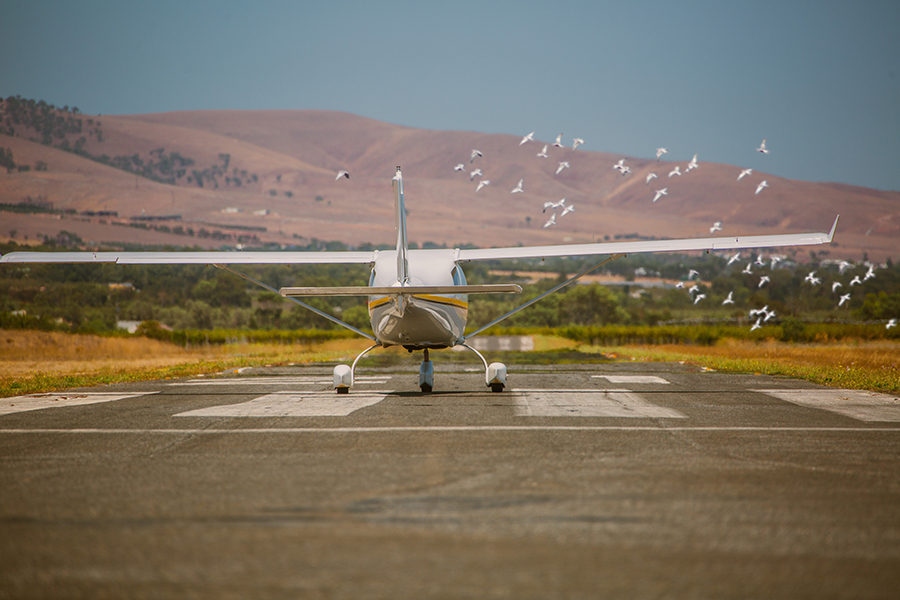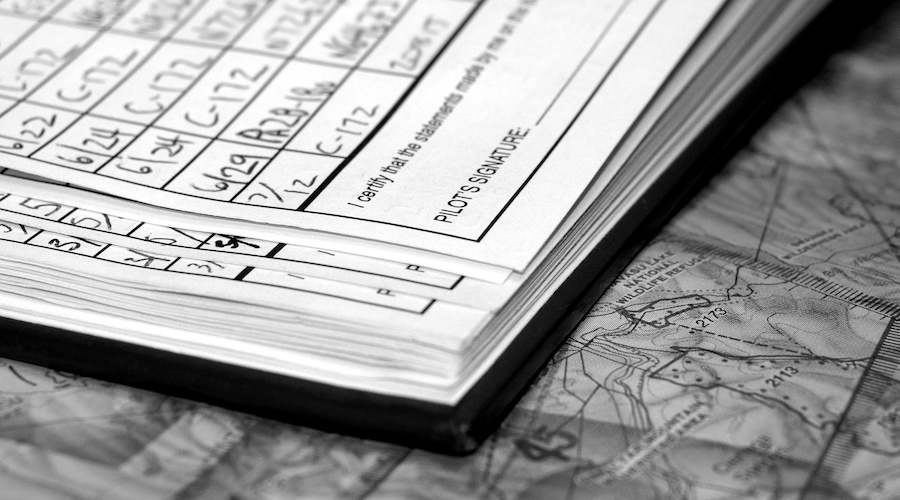-
What is a ‘Bird Strike’?
-
How Common Are Bird Strikes?
- Migratory Patterns
- Time of Day
- Altitude
- Surrounding Features and Fauna
-
Are Bird Strikes Dangerous?
- Engines
- Propellors
- Probes
- Flight Control Surfaces
- Windscreens
-
How do Pilots Avoid Birds?
- They Fly Slower
- Weather Radar
- Engine Spinner Painting
- Lights
- Climb, Don’t Dive
-
Conclusion
Being honest, the birds were there long before we ever were, so we have to accept that we share the air with them. Birds nearly always come off worse when they make contact with an airplane too! However, even small birds can pose a significant danger to aviation. Thankfully bad outcomes are exceptionally rare. Today, we will look at bird strikes, what they are, how often they happen, and how dangerous they really are.
While bird strikes are common, it is rarely a cause for concern. Manufacturers build and test aircraft to withstand most bird strikes. The only danger comes if the bird makes contact with critical or fragile components. Thankfully the chances of this happening are slim.
Let’s take a more detailed look into what constitutes a ‘bird strike’.
What is a ‘Bird Strike’?
According to the International Civil Aviation Organization (ICAO), a “bird strike” is defined as: –
“A collision between a bird and an aircraft which is in flight, or on takeoff or landing roll”.
Essentially, this means that during any phase of flight, a bird strike can occur.
The size of the bird or the speed at which the aircraft is traveling doesn’t matter. While the biggest danger comes from a combination of larger birds at higher aircraft speeds, there is still a small risk presented even from tiny birds.
How Common Are Bird Strikes?
Bird strikes are certainly not uncommon. According to published figures on the FAA ‘wildlife strike’ database in New York airports alone, there were 493 incidents reported from 1st January 2021 to 1st January 2022. That is more than one per day!
Or, to spread that data over a broader range, according to the FAA, there have been over 17 thousand wildlife strikes recorded in 2019!
However, while this may sound like a lot, on the whole, bird strikes don’t pose a significant risk. According to the same website mentioned above, in a 31-year-period, wildlife strikes have only accounted for 292 fatalities worldwide.
Statistically, that is 9 per year. When you factor in that in 2019, 4.5 billion people flew worldwide, the odds of a fatality are infinitesimally small!
Several things may influence how often bird strikes occur. These are areas such as: –
Migratory Patterns
There is a slight uptick in the number of bird strikes in the summer and fall months. There are more birds airborne due to young birds ‘flying the nest’, and seasonal migration begins as the weather cools.
Time of Day
Most bird strikes occur during daylight hours, with around a third occurring at night. Many birds are ‘day VFR’ only. It tends to be nocturnal species that airplanes collide with at night.
Altitude
Most aircraft collide with birds during the takeoff and landing phase. While this isn’t good news, it minimizes the risk a little, as these flight phases are when the aircraft is at its slowest, meaning there is less force when a strike occurs.
Only 3% of bird strikes occur in the USA during the en-route phase.
Surrounding Features and Fauna
Airports located in rural areas or near the coast can be particularly troublesome. Rivers and lakes also attract larger birds, presenting particular difficulties and dangers.
In fact, you might be familiar with one such case where a bird strike did cause a real problem.
Are Bird Strikes Dangerous?
On the whole, bird strikes are not dangerous. After all, most commercial aircraft weigh quite a lot and are made from strong alloys designed to withstand turbulence and thunderstorms. They are also tested to extremes, with simulations and technology that will far exceed what they could expect in the real world.
Want to see the ‘technology’?
Ever seen a chicken fired through a gun at an airplane? Here it is!
However, there are several vulnerable areas that could spell trouble if a bird hits. Such as: –
Engines
Jet engines are tuned to incredibly high-performance levels, and it doesn’t take much to induce a stall or failure. The only things that should go through a jet engine are air and fuel.
When birds strike the engine, this can disrupt or damage the precise angle of the blades and stators, causing an airflow reversal. The core of a jet engine is particularly sensitive. You can see how bad it can get in this video.
Propellors
Propellors already spin at phenomenal speeds, and they aren’t designed to take structural shocks while rotating.
A bird strike could shock load the engine, bend piston rods, or even break the propellor entirely.
Probes
Probes are vital to gather air data to relay to the cockpit. If these are blocked or damaged, then the data isn’t reliable. Probes tend to be one of the worst areas to sustain a bird strike. Fortunately, most aircraft have more than one system acting as a backup.
Flight Control Surfaces
Flight control surfaces, particularly on smaller aircraft, are vulnerable to bird strikes. Because they are lighter and smaller, they are more readily damaged.
Because most bird strikes happen during takeoff and landing, often high lift devices are deployed. If a bird becomes stuck in the flaps, it can’t be retracted!
Windscreens
This is the biggest threat from bird strikes. Airplanes fly at high speeds. A bird flying one direction at 30mph and an airplane flying in the other at 130 mph results in a relative collision speed of around 160mph.
Glass really isn’t designed to hold up too well to collisions at this speed. If a bird penetrates the cockpit at this speed, it could severely injure the pilot!
This pilot was extremely lucky when he made contact with a goose!
How do Pilots Avoid Birds?
Pilots utilize a few techniques to minimize the danger presented by a bird strike. Here are a few to think about.
They Fly Slower
If you are familiar with physics, you’ll already know that force equals mass multiplied by acceleration. The less force there is, the smaller the likelihood of damage occurring.
We can’t change the mass of the bird or the aircraft, but what we can change is our acceleration. Or, to put it even more simply, slow down!
Not only will this minimize the risk of severe damage, but it also gives the pilots more time to ‘see and avoid’ (and quite possibly gives the birds the same luxury too!)
Weather Radar
There have been studies conducted by major aircraft manufacturers that suggest that weather radar can effectively ‘scare’ birds away. However, the jury is still out, and bird strikes still occur on aircraft with active weather radar.
Engine Spinner Painting
Ever flown on a jet with white painted spiral spinners inside the engine? There are a couple of reasons for this. First, it allows people to see that the engine is turning…
But, there is another reason…
The theory is that when viewed from afar, the engines look like eyes, which the birds interpret as predators, and steer clear as a result!
Lights
Bird strikes at night can often come from birds being entirely unaware of the presence of an aircraft.
There is an obvious answer.
Make yourself visible.
The best way to do this at night is by using the aircraft lights. Some aircraft manufacturers actually recommend this as part of their standard operating procedures.
Climb, Don’t Dive
Here is a top tip for avoiding bird strikes if flying in a light aircraft.
A pilot’s first temptation is often to ‘push the nose down to get away from the impending threat.
However, it is a bird’s natural behavior to also ‘dive’ away from predators. If you encounter either a single bird or flock, it is far better to try and climb over them to avoid a collision.
Conclusion
While bird strikes are not uncommon, the statistics prove that they aren’t normally dangerous. With an increase in traffic, the likelihood of bird strikes may go up in the future. Thankfully airplanes are built to withstand bird strikes. And, when combined with other risk mitigation strategies, they shouldn’t be something to be unduly concerned about.



